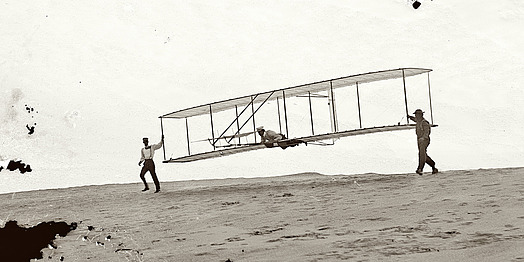
[#21] NOVELTY: IN MATTER, IN KNOWLEDGE OF MATTER, AND IN KNOWLEDGE OF KNOWLEDGE
[#21] Novelty: in Matter, in Knowledge of Matter, and in Knowledge of Knowledge
By Piet Hut
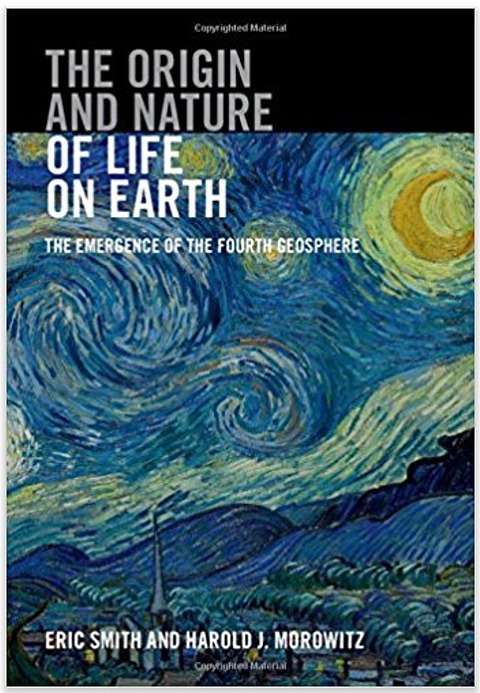
The last four days I spent in Atlanta at Georgia Tech, visiting Eric Smith, the lead author of a pathbreaking book on the Origin of Life. A couple years ago, I convinced Eric to write a book with me to extend his views to more general origins questions, from the origin of the Universe, to the origin of life, to the origin of consciousness -- or you could say, the origins of the Universe, of life, and of the ability to ask these questions.
A couple years before that, I met Eric when he had just left SFI, the Santa Fe Institute in New Mexico, before moving to ELSI, the Earth-Life Science Institute in Tokyo. I have a rule that when three different people whom I highly regard recommend to me to read a book, or meet a person, I do so. I rarely have to follow that rule, since in most such cases I have already become acquainted with the book or person in question. But Eric was an exception, a well guarded secret (for me) ingredient of SFI. But no longer: his highly original Origins of Life book is already bringing him out into the open.
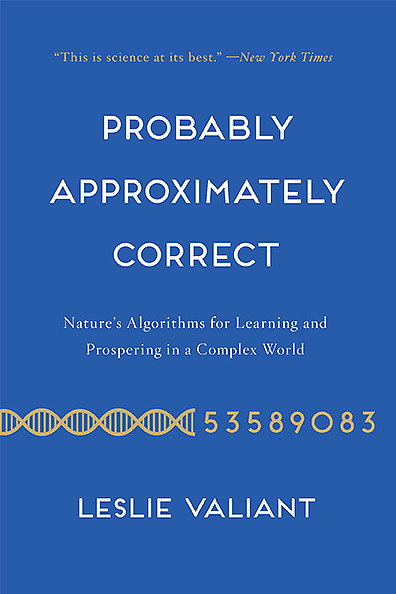
Within minutes of our first encounter, we delved into deep discussions about "life, the Universe, and Everything", and that would set the stage for wide ranging discussions over the years since. When we were ready to start writing a book, we thought about calling it The Innovation Circle, because we had been talking about the Mind-World Circle, the way that the structure of the world, as we know it, depends on the structure of our knowledge, and vice versa. But we then decided to simplify it to just Novelty.
A while later, one day while walking in the woods of the Institute for Advanced Study, I mentioned to Eric that I had read Leslie Valiant's marvelous book Probably Approximately Correct, and that I was impressed with his idea of viewing learnability in a similar category as computability. I also told Eric about Leslie's notion of "the mind's eye" as the narrow doorway between the enormous storehouse of algorithms in the mind and the even much larger storehouse of processes in the natural world, and how that notion helped me in shaping my own picture of the world-cognition relationship, with its circular aspects.
We are interested in the structure of the world and in the structure of our knowledge that allows us to have access to the structure of the world. However, neither the world as such, nor knowledge as such, is ever given to us in pure form. We always deal with the empirical knowledge of the world, and the only freedom we have is to focus on the world side of that knowledge, or on the knowledge side of that knowledge.
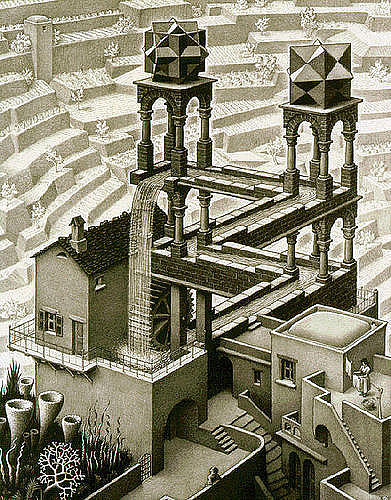
The arrows pointing from world to knowledge and back again each have a flavor of containment relations. We, with our mind-body structures seem to be squarely contained within a much wider encompassing world structure. At the same time, all that is given to us about that world is contained within our knowledge structure. In that sense, the mind-world relationship seems to have a circular flavor. The puzzle is what kind of circle it can be, in which all the links along it have the character of containment relations.
We started with the two links of mind and world. But in our book we aim at a richer chain: from matter to life to cognition to consciousness to the invention of the scientific method to the scientific output which includes our current understanding of all of that, finally closing the circle.
Now the appearance of the circle is that of a circle of Russian dolls. At each step, the containing doll contains an inner doll that is different and in some sense richer than the outer doll: it carries a qualitative sense of novelty. And upon considerable reflection of this picture, we decided that we are willing to go further. We propose that there is a real and not only metaphorical commonality to the meaning of novelty at each of these levels. In this sense the circle has also the character of an Escher-like staircase; or even better, an Escher-style waterfall, as shown here.
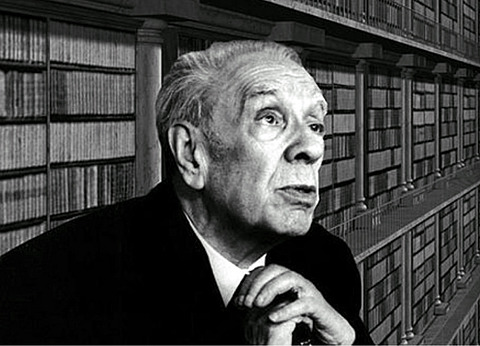
Given our busy schedules, together with our tendency to diverge onto all kinds of other interesting topics, progress on our book has been slow, but steady. When we met this time in Atlanta -- progress at ELSI or IAS, my own home institute, had been even slower because of the many other distractions there -- we wondered how to make sure to keep our eyes on the horizon, for our book project.
I proposed an unconventional approach: to start at the end. What if we would write a (very positive!) review of our book, the kind we would hope to appear after our book would finally be published. That might guide our book writing across the many interruptions in our meetings. Eric immediately mentioned a favorite device of Borges in his Ficciones, of writing reviews of books not yet written (in our case we hope not never written :-).
So off we went, and what follows here is a possible future book review, as a short version, to fit in this blog post (future reviewers, feel free to plagiarize! ^^).
Here goes:
A future book review of Novelty: Emergent Order in Cognition and in the World
“phase transitions”
When I was asked to review this book, I did not know what to expect, but I was intrigued enough to agree to do so. The term emergent order reminded me of phase transitions, such as the transition from steam to water, or from water to ice -- in the latter case giving rise to the emergence of beautiful ice crystals from the more amorphous states of steam and water. But I had no clue as to what the connection with cognition would be.
Working through the first few chapters, I enjoyed the panoply of examples of novelty in the material universe. From the Big Bang, the greatest novelty of all times, through the first mist in the Universe during the first few microseconds after the Big Bang, to the appearance of atoms, molecules, stars and planets, novelty abounded on many different scales in space and time. Finally, on some planets, with their weather cycles and complex forms of erosion of minerals, conditions became ripe for the emergence of life, our own planet Earth being one of them.

I think it is fair to say that the appearance of Life was the next big novelty after the Big Bang, something completely unexpected, no matter how much you might know about the physics and chemistry of matter in a prebiotic state. The authors delve into this question and then list and summarize a number of further appearances of novelty, from multicellularity leading to plants and animals, to the appearance of social species and tool using species, such as humans which combine both.
From there the book moves on, from novelty in nature to novelty in culture, appearing on a time scale ten thousand times faster: fire and speech appeared a few hundred thousand years ago, a mere 1% of 1% of the age of the first life forms on Earth. The authors make many striking comparisons, on an abstract meta level, between the characteristics of living organisms and that of cultural institutions such as cities, corporations, and political or religious organizations.
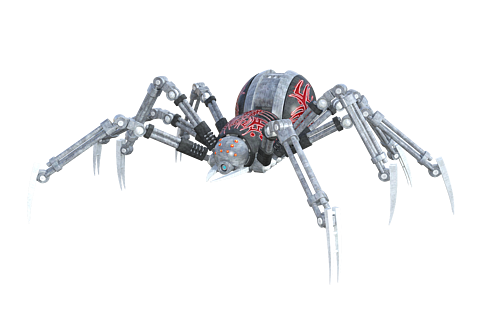
They then move on to the biggest novelty in the last few decades, making another leap of a factor of 10,000, to the emergence of current forms of AI, Artificial Intelligence, and its amazing progress especially in the last few years. In a fascinating tour de force, they point out how in nature, culture, and technology the appearance of the most shocking novelty may be connected with a similar recurring phenomenon: the spontaneous emergence of autonomous agents in complex systems.
They present this as the formulation that Piet has adopted while he started to explore the study of the origins of life. It was his attempt to capture the largest essence of the nature of life that could be abstracted away from the particularity of its instantiation in a chemical substrate. Eric appreciated the abstract clarity of that formulation, in which each word carried a fundamental significance. At the same time, his thesis with Harold Morowitz was that the abstractions away from chemistry contained only part of the particular nature of life, and the remainder relied on abstractions that were inherent in the nature of chemistry in a planetary context.
“the spontaneous emergence of autonomous agents”
Both of them, in this book, put forward as an open problem the question to what extent this formulation can work for the three different areas of life, society, and machine intelligence, even though the nature of "spontaneous" differs in these three cases. The origins of life were truly an example of spontaneous emergence, without anyone present to design anything. This they agreed on as a valid characterization.
The origins of cities, say, followed a process in which conscious human deliberation clearly played a regulating role, but without anyone having any grand design in mind of how to build a new thing called "city" from scratch. Rather, a gradual process of increasingly complex settlements eventually grew into a city.
And the origins of machine intelligence, while being more consciously driven, with each next step being partly designed, still had crucial elements of spontaneity in them: try this, try that, see what works -- and then watch different forms of AI interact with each other and with itself, another process of spontaneous emergence.
If the book would have stopped here, it already would have been a gem in both clarity and breadth of gathering recent developments in many different fields. But this part of the book only pertains to the historical time line, listing what kinds of novelty appeared and how. Far more interesting even is the more meta analysis provided next.
“phase transitions, virtualization, and reflection”
The whole historical narrative is seen to involve three major motifs, namely phase transitions, virtualization, and reflection. Phase transitions is the integrative paradigm of Eric's book with Harold Morowitz, in which the origins of life, as well as the subsequent major transitions in the forms of life's complexity, are seen to be akin to phase transitions. What is added in this new book is, first, the notion of virtualization.
“virtualization”
Starting with the origin of RNA/DNA, present in any living cell, life has used the correspondence between genotype and phenotype, as a kind of software/hardware divide. The actual life forms, expressed in their phenotype, are known to be coded to a large extent by the software patterns in the genotype (hence the term "gene editing"), thus making the genotype a carrier of virtual information.
There is an interesting duality inherent in biological virtualization: to the selecting environment, the genome is a model of phenotype; but to the phenotype, the genome is a model of the selecting environment. For example, the genome presents a model for the metabolism of an organism in the way it functions in its environment, while the genome also presents a model of the selecting environment in how it constrains the process of metabolism. The same holds for physiology, regulation, and other crucial aspects of the organism's phenotype. This control theoretic perspective, in which a key is a model of a lock and a lock a model of a key, was already prominent in the writings of Roger C. Conant and W. Ross Ashby in 1970.
Moving from nature to culture, we can consider language as the first human invention of virtual reality. The groundwork that enables this virtualization is a complicated edifice. When you tell a story, this requires among other things the separation of a part of your self from your immediate embedding in the surroundings, so that that part can carry information about things that are not here, not now, and not you. The power of this way of conquering space, time, and identity cannot be overestimated. The virtualization provided by speech was the original driving force behind our current supremacy among all other species, for better and for worse.
“reflection”
The second addition is that of reflection, in the sense in which it is used in computer science, where the term was introduced by Brian Cantwell Smith. It points to the kind of computer languages that allow the ability of a computer program to examine and modify its own structure and behavior at runtime. This allows for powerful forms of metaprogramming, preferably in homoiconic languages, in which the program structure reflects its syntax.
Reflection is essential to the chain of innovations' ever forming a circle; without it, they would just be a hierarchy. Reflection brings in the demanding new requirement that a symbol, to be able to point to a thing, at the same time has to be a thing. Historical examples, long before computer languages, include gene regulation by proteins or the addition of syntax to symbols in human language. Future examples will no doubt include more and more complex and subtle ways in which machines can operate machines, including themselves.
Piet Hut is President of YHouse (where this blog is hosted), Professor of Astrophysics and Head of the Program in Interdisciplinary Studies at the Institute for Advanced Study in Princeton, and a Principal Investigator and Councilor of the Earth-Life Science Institute in the Tokyo Institute of Technology.